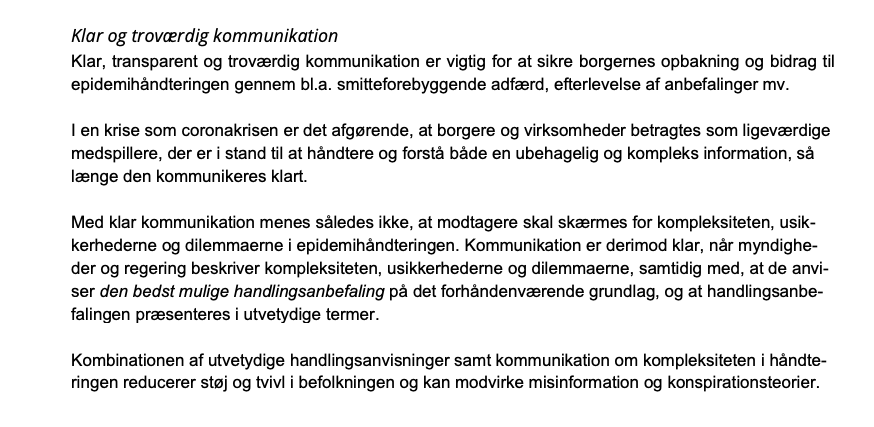
Hvor stor er villigheden til at modtage en booster-vaccine?
Villigheden er høj. 96 % af dem, som har modtaget 2 stik, ønsker også det tredje. Men villigheden varierer, og særligt de yngre siger "nej tak".
Læs rapporten her: bit.ly/3spAGZe
🧵 (1/5)
#dkpol #dkmedier
Villigheden er høj. 96 % af dem, som har modtaget 2 stik, ønsker også det tredje. Men villigheden varierer, og særligt de yngre siger "nej tak".
Læs rapporten her: bit.ly/3spAGZe
🧵 (1/5)
#dkpol #dkmedier

Ovenstående grad viser den totale villighed i befolkningen. Grafen nedenfor viser andelen blandt dem, der har fået eller ønsker vaccination med 2 stik. (2/5) 

Udover alder betyder demografi ikke det store. Uanset køn og uddannelsesniveau er villigheden til at tage næste stik stor. (3/5) 



Psykologi betyder tilgengæld noget. Analyser viser, at dem, der i mindre grad oplever COVID-19 som en trussel, er mindre tilbøjelige til at sige "ja" til 3. stik, selvom de har fået de første 2. (4/5) 

OBS: Det kan være svært at måle vaccinevillighed vha. surveys (nature.com/articles/s4158…). Her er vores overvejelser om undersøgelsens repræsentativitet .👇 Overordnet ser undersøgelsen ud til at være præcis, men vi forventer en lille overvurdering af den faktiske villighed. (5/5) 

• • •
Missing some Tweet in this thread? You can try to
force a refresh

















